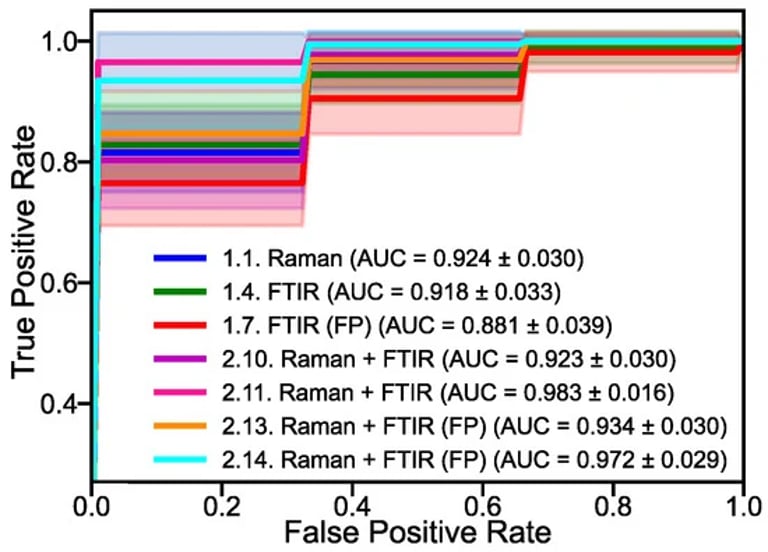New Study Reveals Spectroscopy Breakthroughs in Non-Invasive Early Lung Cancer Detection
October 11, 2024
Lung cancer remains the leading cause of cancer-related deaths worldwide, claiming approximately 1.8 million lives each year.
Current diagnostic methods, such as CT scans and biopsies, often fall short for early lung cancer detection due to their high costs and lengthy procedures.
A recent study analyzed blood plasma samples from 36 participants, evenly divided between healthy individuals and those diagnosed with non-small cell lung carcinoma (NSCLC).
This research investigates the integration of Raman and Fourier-transform infrared (FTIR) spectroscopy with advanced data fusion techniques to enhance lung cancer detection from blood plasma.
Raman spectroscopy outperformed FTIR in model accuracy, achieving 0.85 accuracy compared to FTIR's 0.79, demonstrating the potential of these methods.
The application of low-level data fusion techniques significantly boosted diagnostic accuracy to 0.99 when feature selection was utilized, showcasing its effectiveness in extracting vital diagnostic information.
The study emphasizes that structural protein changes are crucial for cancer detection, with low-level data fusion and feature selection playing a key role in improving diagnostic models.
Statistical analysis revealed significant differences in protein-related oscillations between lung cancer patients and healthy controls, highlighting the potential of these proteins as biomarkers.
The findings suggest that combined vibrational spectroscopy techniques could pave the way for non-invasive diagnostic tools for early lung cancer detection, warranting further exploration into molecular mechanisms and photonic diagnostic technologies.
Key vibrational peaks identified in Raman spectroscopy for lung cancer detection were at 1125 cm⁻¹, 1587 cm⁻¹, and 1632-1668 cm⁻¹, while FTIR detected significant peaks at 1055-1070 cm⁻¹ and 1699 cm⁻¹.
Summary based on 0 sources